I have had a few problems getting to grips – literally – with hand embroidering again (not to mention eating with fully functioning knife and fork ). So in order to get back to my normal working life of designing, stitching and teaching, and not being given any specific physiotherapy for my now fully mended broken wrist, I decided to return to the very beginning of my stitching career – Canvas Work.
I had lost almost all of my strength and most of my dexterity when the plaster finally came off my right wrist, and although the drawings were OK the stitching wasn’t. The main thing about canvas work is that it is worked on an open mesh ( that has to be completely covered) so the needle can be easily inserted into the square hole instead of having to push it in and pull it out. It is easy and repetitive move which is what I needed to get some strength back.
So I got all my old canvas work embroideries off the walls in the house and realised that they were all pictures of things – either real things like the window above (where I could see past the plants to a large American patchwork quilt hung on the wall) or completely imagined scenes like the brown angel dog in a landscape – cruel friends mocked my early design and stitching techniques for the stream, by calling it Dog with Radiator! But mocked or not, I had found a new and exciting way of working – hand embroidery – and one that I intuitively knew was to be a very long-lived fascination.
I enjoyed the tension between trying to make things look natural but realising them within a strict structure; window frames were a perfect subject to further “contain” my scenes and formal garden design became a real passion – accessed through old gardening books and visits to some famous English Gardens. Topiary became an enduring passion as it seems almost childish in its simplicity of form but very sophisticated in its visual impact, I find the larger specimens often intimidating – specially the animal and bird forms.
I started to design many of these embroideries and my first exhibition of embroideries was called Canvas Work at The Francis Kyle Gallery in London. Most of the pictures were sold, but I still retain enough to show my progress. In the early pieces there is an interest in the repeating patterns that can be stitched using the regular grids alongside the more descriptive stitching in tent stitch. But eventually the random stitches asserted themselves as I became fascinated by atmospheric colour and started to blend my threads to make new colour combinations.
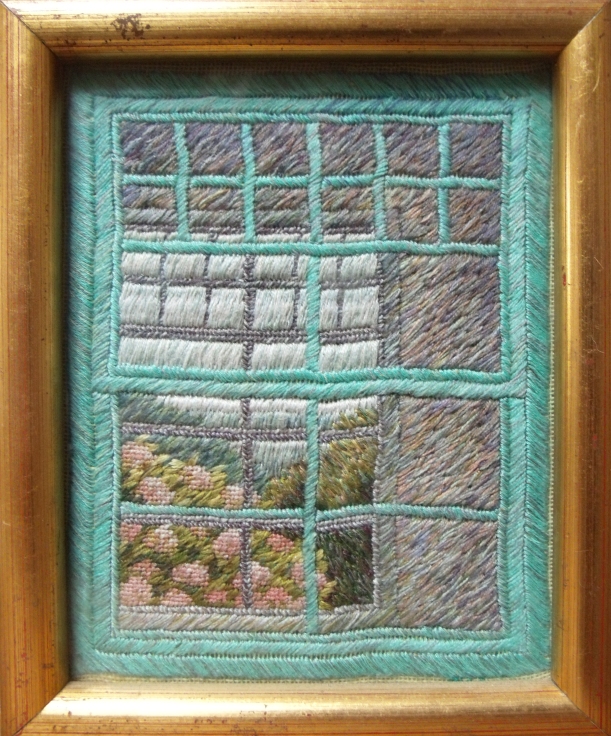
My last canvas embroidery of gardens shows how far I had strayed from the rigours of the canvas weave.
So returning to canvas work gave me a real sense of returning to my embroidery roots. I didn’t want to get involved in designing a scene, I was more interested in just getting the use of a precise stitch and a stronger grip, so I opted to make a counted thread design. I remembered seeing and photographing a tiny wool canvas work purse that belonged to a student at Heart Space Studios.
I set about making a small square of canvas embroidery based on Crazy Patchwork – my favourite embroidery design system at the present time. I drew a random set of shapes in waterproof ink onto a 12 holes to the inch canvas – big enough to become either a case for my glasses or mobile phone.
I decided on a colour range and selected stranded cotton threads and stated to stitch working from an old needlework book for all the different patterns. The patterns are lovely and have wonderful names, my favourite name is “Encroaching Gobelin” I can just imagine something out of a fairy tale, I use this stitch for blending colours but didn’t need it for this design.
I decided to use a series of striped lines of stitches to make up the crazy patch shapes, usually counted canvas is worked in solid colour blocks – like the cushion at the head of the post.
The work was extremely slow to make – it took me the better part of 2 months to complete, mostly because at first it was very painful and tiring to keep the my hand stitching, but also because I kept changing my mind on the colours. Usually I work to a design or colour swatch that I have designed before I start , but this wasn’t really work, this was therapy!
the finished work is often mis-shapen due to the pull of the directional stitching, but this type of canvas is sized, meaning it has a weak glue in it that can be activated by dampening allowing the work to be stretched back into shape,
I had initially thought to develop a day workshop at Heart Space Studios to make a similar design, this type of embroidery is not often seen these days so it would be good to resurrect it, and the use of the striped and lively colours makes it look very zingy…but I would need to make a series of workshops to develop it – more like 6 sessions… so maybe I will reconsider this at a later date.

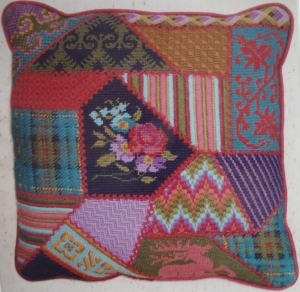
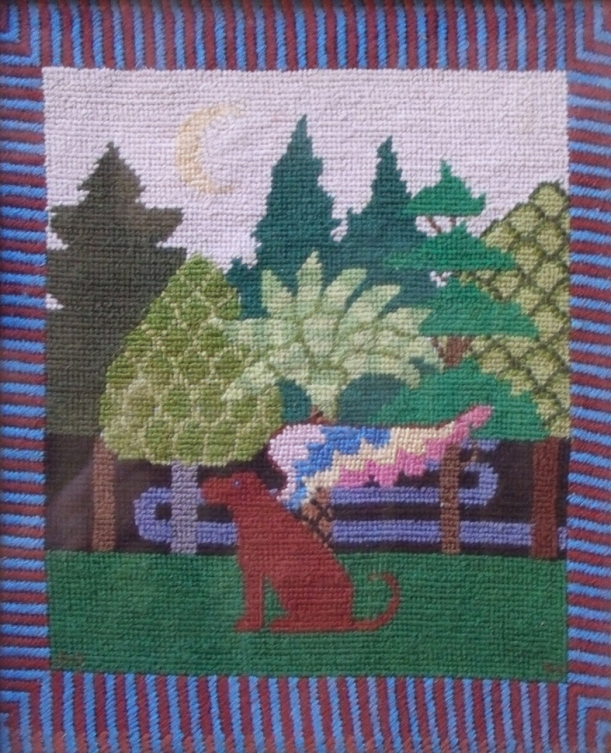
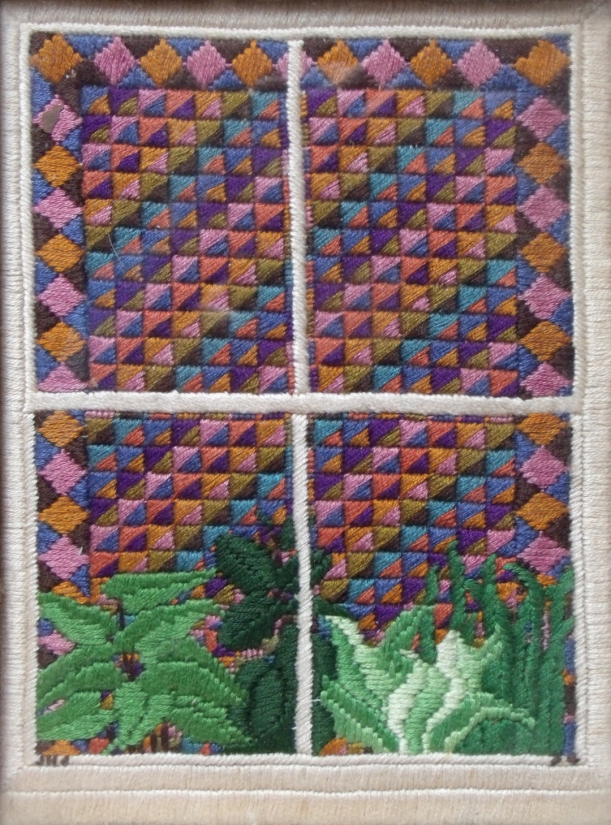
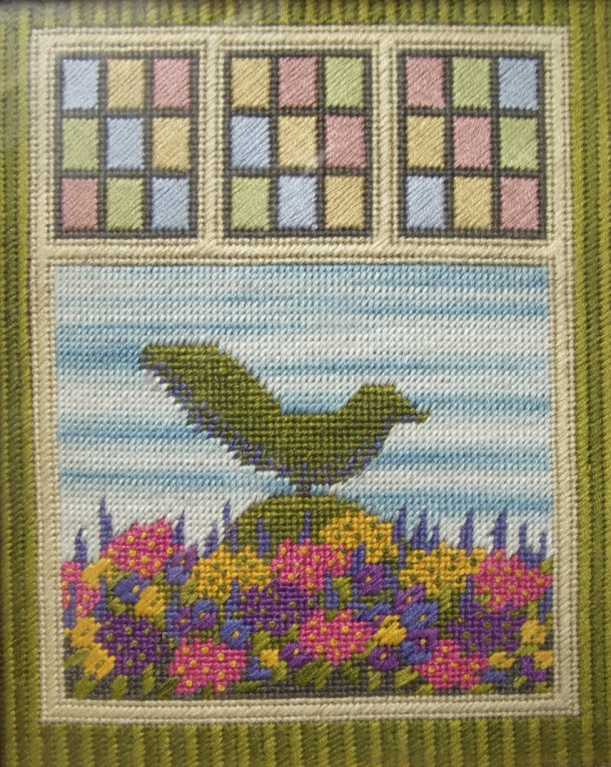
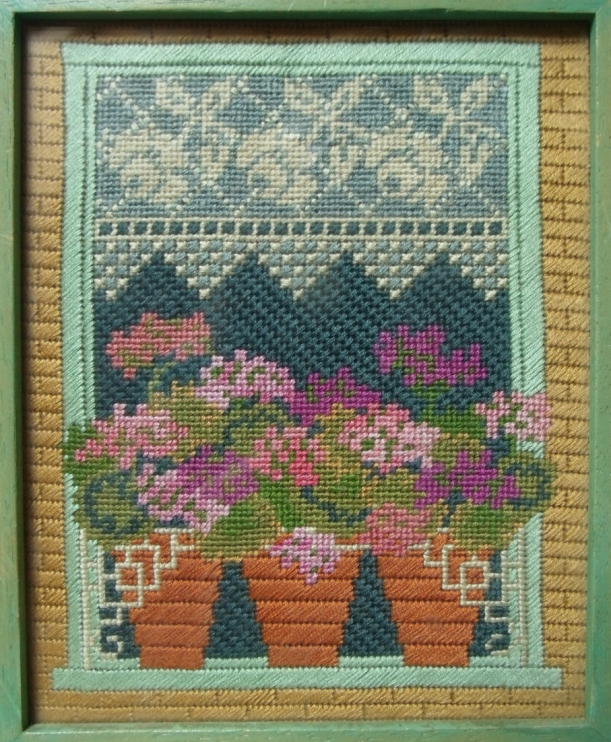
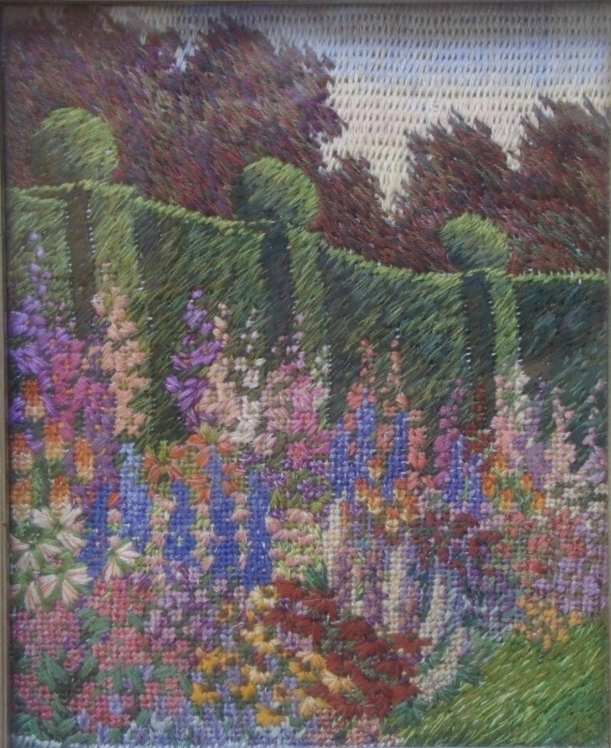
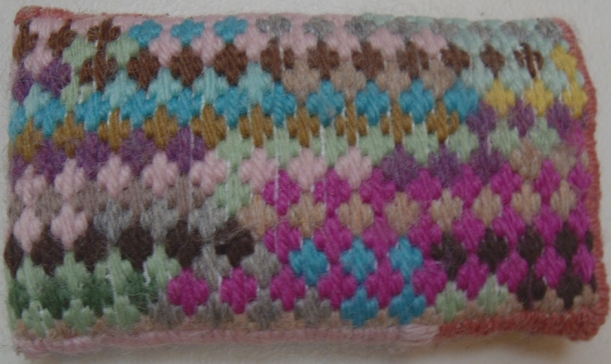
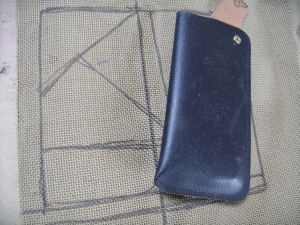
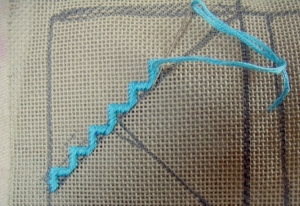
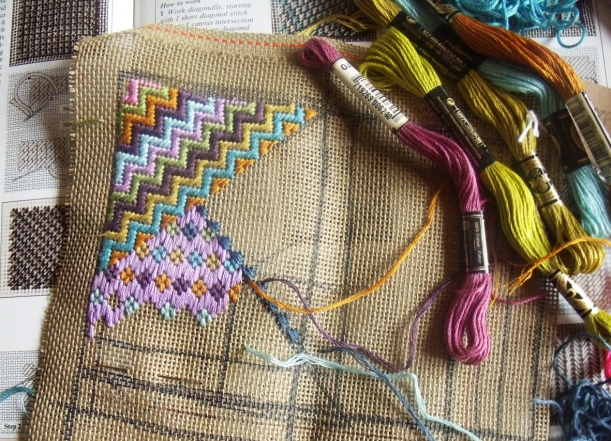

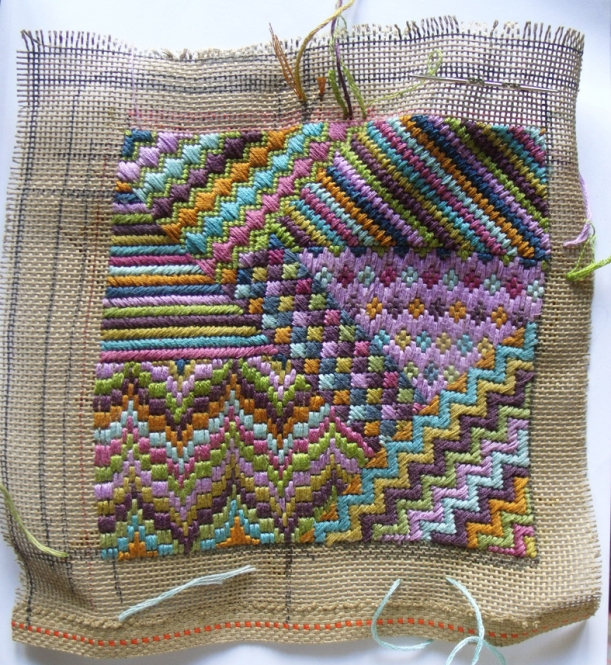
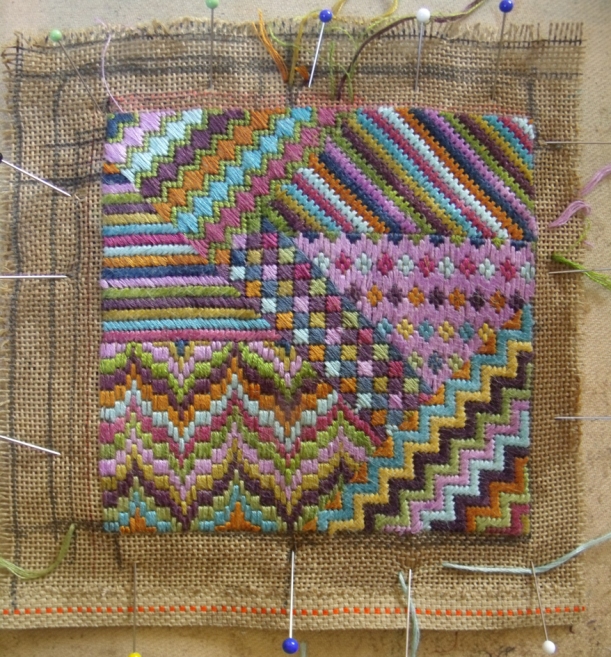
I hope you build up strength as quickly as possible and this has to be the most beautiful form of physiotherapy there is!